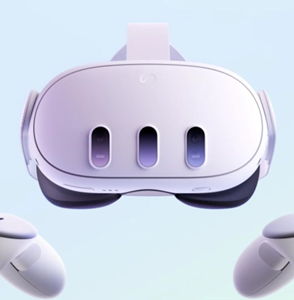Galerio: A New Era of Cultural Exploration in the Metaverse
September 1, 2024, 6:25 am
Google
Location: United States, New York
In a world where technology often overshadows tradition, Galerio emerges as a beacon of cultural revival. Launched by Phygital Labs in Ho Chi Minh City, this innovative platform harnesses the power of extended reality (XR) to breathe life into Vietnam's Last Royal Dynasty. It’s not just an app; it’s a portal to the past, a bridge connecting history with the present.
Imagine stepping into a virtual realm where the Nguyen Dynasty unfolds before your eyes. Galerio offers an immersive experience that transcends mere observation. It invites users to explore, discover, and engage with history in a way that traditional museums cannot. The platform is accessible globally at galerio.io, supporting devices like Vision Pro and Quest.
The rise of social media has democratized content creation, but it often lacks depth. Galerio addresses this gap. It transforms art, culture, and history into narrative-driven experiences. The pilot chapter showcases nine royal antiques, each digitally authenticated on the blockchain. This ensures authenticity while allowing visitors to embark on a profound cultural journey before even stepping foot in a museum.
Unlike social-centric metaverses such as Meta's Horizon Worlds, Galerio focuses on exploration rather than social interaction. It’s a solitary adventure through high-fidelity virtual environments. Users navigate intuitive, hands-free interactions, uncovering layers of historical narratives that have stood the test of time.
As the market for VR headsets is projected to hit 100 million units by 2024, the demand for quality applications is palpable. Galerio rises to this challenge. It boasts ultra-realistic 3D visuals, immersive soundscapes, and AI-guided tours. Users can witness artifacts as they exist today, glimpse their historical context, and trace their evolution over time. This multi-dimensional approach reveals hidden meanings, enriching the user experience.
AI guides enhance this journey, providing context and answering questions. Soundscapes recreate the ambiance of historical environments, immersing users in a sensory experience. Galerio empowers users to curate their own museum experiences, much like social apps allow for personalized content creation.
Phygital Labs has crafted Galerio with a universal approach. By building on a web framework rather than a native app, they ensure rapid expansion across various XR platforms. This meticulous engineering guarantees native-level quality across devices. The platform launched on Quest just two weeks after Vision Pro, with a mobile version on the horizon. This strategy significantly broadens its reach, making it accessible to users without XR headsets.
The future of storytelling is evolving. Galerio is not just a platform; it’s a cultural hub. Following the pilot chapter on the Nguyen Dynasty, more chapters are set to roll out in early Q4. The platform is also inviting museums, cultural institutions, and private collectors to showcase their artifacts. This initiative will enrich Galerio with diverse cultural treasures, facilitating cross-cultural exchanges that transcend traditional boundaries.
In a digital economy increasingly driven by technology, Galerio stands out as a model for preserving and promoting art, culture, and history. It’s a testament to the potential of spatial computing. By leveraging cutting-edge technology, Galerio transforms how we engage with our past.
Imagine walking through a virtual gallery, where each artifact tells a story. Picture yourself interacting with history, guided by AI, as you uncover the narratives woven into each piece. This is the promise of Galerio. It’s not just about viewing; it’s about experiencing.
As we move forward, the challenge will be to maintain this balance between technology and authenticity. Galerio’s commitment to high-quality experiences is crucial. It ensures that users not only engage with history but also appreciate its richness and complexity.
The launch of Galerio marks a significant milestone in the journey toward an experience-driven metaverse. It’s a bold step into a future where art, culture, and history are not just preserved but celebrated.
In a world where distractions abound, Galerio offers a sanctuary for cultural exploration. It invites users to pause, reflect, and immerse themselves in the stories of our past.
As we embrace this new digital landscape, platforms like Galerio will shape our understanding of history. They will redefine how we connect with our cultural heritage.
In conclusion, Galerio is more than a technological innovation. It’s a cultural renaissance. It’s a reminder that even in a fast-paced digital world, the stories of our past deserve to be told, shared, and cherished. The metaverse is not just a space for social interaction; it’s a canvas for storytelling. And Galerio is leading the charge.
For more information, visit galerio.io.
Imagine stepping into a virtual realm where the Nguyen Dynasty unfolds before your eyes. Galerio offers an immersive experience that transcends mere observation. It invites users to explore, discover, and engage with history in a way that traditional museums cannot. The platform is accessible globally at galerio.io, supporting devices like Vision Pro and Quest.
The rise of social media has democratized content creation, but it often lacks depth. Galerio addresses this gap. It transforms art, culture, and history into narrative-driven experiences. The pilot chapter showcases nine royal antiques, each digitally authenticated on the blockchain. This ensures authenticity while allowing visitors to embark on a profound cultural journey before even stepping foot in a museum.
Unlike social-centric metaverses such as Meta's Horizon Worlds, Galerio focuses on exploration rather than social interaction. It’s a solitary adventure through high-fidelity virtual environments. Users navigate intuitive, hands-free interactions, uncovering layers of historical narratives that have stood the test of time.
As the market for VR headsets is projected to hit 100 million units by 2024, the demand for quality applications is palpable. Galerio rises to this challenge. It boasts ultra-realistic 3D visuals, immersive soundscapes, and AI-guided tours. Users can witness artifacts as they exist today, glimpse their historical context, and trace their evolution over time. This multi-dimensional approach reveals hidden meanings, enriching the user experience.
AI guides enhance this journey, providing context and answering questions. Soundscapes recreate the ambiance of historical environments, immersing users in a sensory experience. Galerio empowers users to curate their own museum experiences, much like social apps allow for personalized content creation.
Phygital Labs has crafted Galerio with a universal approach. By building on a web framework rather than a native app, they ensure rapid expansion across various XR platforms. This meticulous engineering guarantees native-level quality across devices. The platform launched on Quest just two weeks after Vision Pro, with a mobile version on the horizon. This strategy significantly broadens its reach, making it accessible to users without XR headsets.
The future of storytelling is evolving. Galerio is not just a platform; it’s a cultural hub. Following the pilot chapter on the Nguyen Dynasty, more chapters are set to roll out in early Q4. The platform is also inviting museums, cultural institutions, and private collectors to showcase their artifacts. This initiative will enrich Galerio with diverse cultural treasures, facilitating cross-cultural exchanges that transcend traditional boundaries.
In a digital economy increasingly driven by technology, Galerio stands out as a model for preserving and promoting art, culture, and history. It’s a testament to the potential of spatial computing. By leveraging cutting-edge technology, Galerio transforms how we engage with our past.
Imagine walking through a virtual gallery, where each artifact tells a story. Picture yourself interacting with history, guided by AI, as you uncover the narratives woven into each piece. This is the promise of Galerio. It’s not just about viewing; it’s about experiencing.
As we move forward, the challenge will be to maintain this balance between technology and authenticity. Galerio’s commitment to high-quality experiences is crucial. It ensures that users not only engage with history but also appreciate its richness and complexity.
The launch of Galerio marks a significant milestone in the journey toward an experience-driven metaverse. It’s a bold step into a future where art, culture, and history are not just preserved but celebrated.
In a world where distractions abound, Galerio offers a sanctuary for cultural exploration. It invites users to pause, reflect, and immerse themselves in the stories of our past.
As we embrace this new digital landscape, platforms like Galerio will shape our understanding of history. They will redefine how we connect with our cultural heritage.
In conclusion, Galerio is more than a technological innovation. It’s a cultural renaissance. It’s a reminder that even in a fast-paced digital world, the stories of our past deserve to be told, shared, and cherished. The metaverse is not just a space for social interaction; it’s a canvas for storytelling. And Galerio is leading the charge.
For more information, visit galerio.io.

